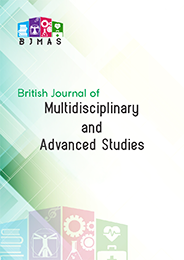Adoption of Livestock as a Component in the Farming System of Mid Hill in NEPAL
DOI:
https://doi.org/10.37745/bjmas.2022.0445Abstract
The goal of this study conducted in 2019 was to thoroughly look into the local farming methods, population demographics, and physical features in the Panchadewal-Binayak Municipality and Turmakhand Rural Municipality of the Achham district in Nepal through an initial field survey. Using a multi-stage purposive random sampling strategy, 130 sample households representing agricultural communities were chosen, with an emphasis on the different geophysical zones next to the Karnali River. Achham, a least developed region in Nepal's far-western mid-hills, was the study's main focus. The study looked at a number of socioeconomic variables to see how they related to farmers' adoption of livestock enterprises. Findings showed that the adoption of livestock was negatively impacted by the head of the household's gender, ethnicity, size of family, and farmers' interaction with extension agents. On the other hand, the major occupation of the head of the household and availability to financial facilities or credit were found to be associated with a greater likelihood of adopting livestock. The study highlights the significance of addressing these critical drivers in technology distribution and supporting extension initiatives for increased farmer engagement in the livestock enterprise, acknowledging livestock as a vital component of the farming system.
Downloads
Downloads
Published
Versions
- 19-03-2024 (2)
- 19-03-2024 (1)












